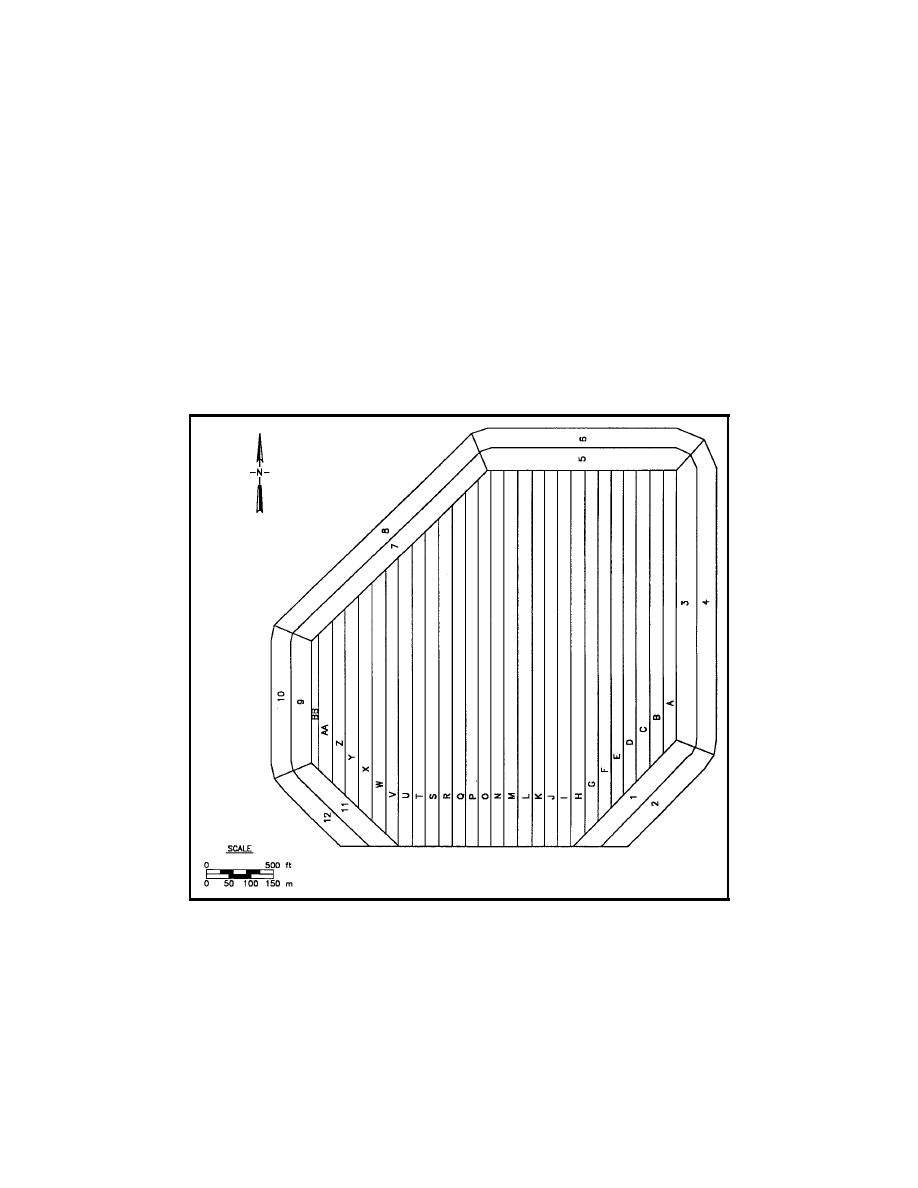 |
||
|
|
||
|
Page Title:
Figure 33. Disposal lanes used for placing cap material in Port Newark/ Elizabeth project |
||
| |||||||||||||||
|
|
 of 25 to 30 min while moving at an average speed of 3.0 to 3.7 km/hr with
the hull cracked open 0.3 m. The Long Island pumped out its average
9,200-m3 load through over-the-side pipes with the slurry directed forward
over a period of 2 to 3 hr while moving at 1.9 to 5.6 km/hr.
To uniformly place the material, the dredges followed a series of lanes
30 m wide that covered the contaminated sediment mound and apron.
Turning requirements typically caused the hopper barge to move over four
lanes after reaching the end of a lane. A series of straight-lane segments
around the perimeter were also used to cover the outer edges of the pro-
ject. Disposal-lane orientation varied over the duration of the project. In-
itially, the lanes started north-south; at later stages they were a series of
straight sections around the roughly octagon-shaped perimeter of the pro-
ject (Figure 33). Microwave positioning (with three shore stations) with
an estimated accuracy of 3 m or better was used for navigation and posi-
tioning of the hopper dredges.
Figure 33.
Disposal lanes used for placing cap material in Port Newark/
Elizabeth project
Initial cap placement involved sailing long straight lines, 600 to 900 m
long (with a turn at the end of each line). Cleanup operations, i.e., filling
in small areas that have less than the required thickness, generally in-
volved areas only about 100 m across. Placing sand in these small areas
was much less efficient due to two factors. For the Long Island, maneu-
vering is very difficult, with 20 to 25 min required to turn the vessel
116
Chapter 10 Case Studies
|
|
Privacy Statement - Press Release - Copyright Information. - Contact Us - Support Integrated Publishing |